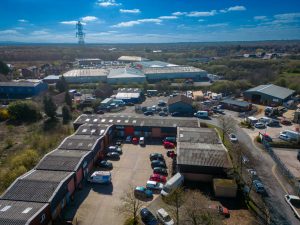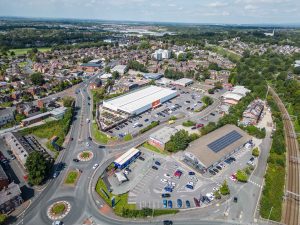In brief, 2023 was a challenging yet successful year for Wildbrook.
The market was skinny and investment levels were at the lowest level since 2009, with signs of outward yield movement continuing in most sectors. Market liquidity has been constrained and in some sectors pricing remains volatile.
However, interest rates will come down at some point (likely Q3 onwards) with the first two quarters potentially remaining a challenge. We cannot see how the government would radically cut rates consecutively this year given that inflation has only recently reduced and stabilised, and still has some way to go towards 3% (2% is the target). Previous radical rate cut exercises have been on the back of more significant events such as the GFC. The total returns for commercial real estate in the UK are forecast for 2024 to be at the highest since 2010, which is a compelling argument to step in to buy mode. This cannot be ignored.
Industrial still looks to be a good buy, albeit a lot of the UK funds are now fully invested in this sector and the development pipeline has reduced, with in turn vacancy rates rising slightly. The fundamentals remain attractive and the diverse tenant base that occupy industrial assets retains their resilience to overcome challenging conditions. Big boxes remain a favourite for funds and overseas buyers, with Asian money and sheer quantity of their savings yet to fully hit the UK and European real estate markets. Multi-let provides a good opportunity. There has been strong rental growth over the past few years since COVID19 and secondary assets are still playing catch up in part to their prime multi-let double digit leased asset counterparts. Supply of new build MLI has been very slow due to increased build and land costs over the past few years, therefore existing stock value and occupier demand remains at a strong level.

There is the obsolescence question around industrial however, and as modern new build specification has changed in recent years to suit ESG requirements of investors, the capital expenditure now required for industrial asset refurbishment has (or should have) increased and needs to be factored in to appraisals accordingly on a case by case basis.
Offices are an interesting bet, and for those wishing to gamble on the sector could be proved right in due course, provided there is a good asset management plan to see through refurbishments at a high specification level and take on immediate letting risk in the short term. The Big 6 Cities remain a favourite, with rental growth prospects looking good in Birmingham and Manchester. Out of town offices need strong USP’s to perform well and must be best in class in the town or city for investors to get excited.
Retail provides attractive returns, and for assets that have stood the test of time and been through the crucible experience, can be a good buy for investors – particularly where they are subject to re-based rents and on medium to long term leases to good covenants. Discount has been applied in general, by the broad brush approach that follows market sentiment, however, for those doing their due diligence I see high street retail and retail warehousing as good options in 2024 – particularly with non-fashion brand tenants. Yield offers significant arbitrage to gilt rates and provided there is a good covenant paying the 4 rent cheques per year, then it should be considered.

At Wildbrook, we have been involved in numerous investment transactions during 2023 including retail warehousing, industrial and logistics, multi-let industrial, mid box industrial and long income retail, roadside and convenience assets. We have been active on both the buy side and the sale side, which has been good for the business.

We look forward to a brighter 2024 and envisage a recovery in this year, ahead of the ‘Survive until 2025’ suggestions by other property companies.
Please do get in touch if you have not already, with your investment requirements for this year and we have a pipeline of sales which we can keep you updated on.
Let’s have a cracker of a year!



